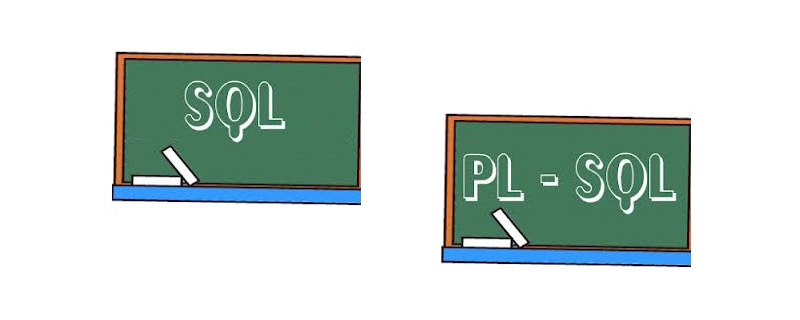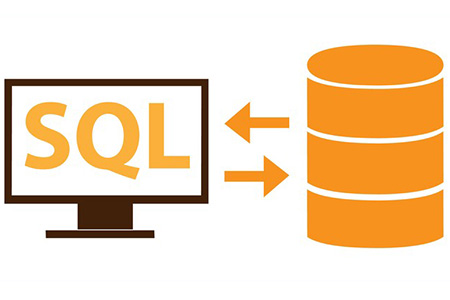Simple comparison between SQL and PL/SQL
SQL and PL/SQL are both relational database languages, what is the difference between them? In this article, I will give you a brief comparison between SQL and PL/SQL, and introduce the differences between SQL and PL/SQL. I hope it will be helpful to you.

What is SQL?
SQL (Structured Query Language) is a standard database language used to create, maintain and retrieve relational databases. [Recommended related video tutorials: MySQL Tutorial]
Advantages of SQL:
1. It is a high-level language with advantages over procedural languages. Greater levels of abstraction.
2. It enables system personnel and end users to handle the many database management systems available.

3. Portability. This type of migration may be required when the underlying DBMS needs to be upgraded or changed.
4. SQL can be embedded in the syntax of many other languages, such as C/C, Java, Perl, Python, PHP, etc. It is a data-oriented declarative language.
What is PLSQL?
PLSQL is a block structured language, a database-oriented programming language, and a procedural language. It is an extension of SQL, it saves SQL statements in its syntax, it extends SQL with procedural functions.
Advantages of PL/SQL:
1. Block structure: It consists of code blocks, and they can be nested in each other. Each block forms a unit of task or logical module. PL/SQL blocks are usually retained in the message and reused.
2. Procedural language capability: It consists of procedural language constructs, such as conditional statements (if else statements) and loops (FOR loops).
3. Better performance: PL/SQL engine processes multiple SQL statements simultaneously with one block, thereby reducing network traffic.
4. Error handling: PL/SQL effectively handles errors or exceptions during the execution of PL/SQL programs.
The main difference between SQL and PL/SQL

1. SQL executes a single query or execution at a time Single insert, update, delete. Pl/SQL, on the other hand, executes one block of code at a time for performing multiple select, insert, update, delete operations.
2. SQL is a database structured query language. While PL/SQL is a database programming language using SQL; used for writing complete programs using variables, loops, operators, etc.
3. SQL is used to write queries, using DDL (data definition language), DML (data manipulation language) statements; PL/SQL is used to write program blocks, and its syntax includes procedures, functions, triggers, package, variable.
4. SQL query is used to retrieve data from the database; it can also perform operations such as adding, deleting, and modifying. Rather, PL/SQL is used to create applications that can display information retrieved by SQL.
5. SQL is a declarative language and can be embedded in PLSQL; PLSQL is a procedural language and can be embedded in SQL.
6. SQL is data-oriented and can interact directly with the database server. PL/SQL is application-oriented and does not interact with the database server.
7. SQL does not support control structures; PL/SQL can use control structures, such as for loops, while loops
8. SQL is mainly used to manipulate data; PL/SQL is mainly used to Create an application.
The above is the entire content of this article, I hope it will be helpful to everyone's study. For more exciting content, you can pay attention to the relevant tutorial columns of the PHP Chinese website! ! !
The above is the detailed content of Simple comparison between SQL and PL/SQL. For more information, please follow other related articles on the PHP Chinese website!

Hot AI Tools

Undresser.AI Undress
AI-powered app for creating realistic nude photos

AI Clothes Remover
Online AI tool for removing clothes from photos.

Undress AI Tool
Undress images for free

Clothoff.io
AI clothes remover

Video Face Swap
Swap faces in any video effortlessly with our completely free AI face swap tool!

Hot Article

Hot Tools

Notepad++7.3.1
Easy-to-use and free code editor

SublimeText3 Chinese version
Chinese version, very easy to use

Zend Studio 13.0.1
Powerful PHP integrated development environment

Dreamweaver CS6
Visual web development tools

SublimeText3 Mac version
God-level code editing software (SublimeText3)

Hot Topics
 1661
1661
 14
14
 1417
1417
 52
52
 1311
1311
 25
25
 1261
1261
 29
29
 1234
1234
 24
24
 MySQL's Role: Databases in Web Applications
Apr 17, 2025 am 12:23 AM
MySQL's Role: Databases in Web Applications
Apr 17, 2025 am 12:23 AM
The main role of MySQL in web applications is to store and manage data. 1.MySQL efficiently processes user information, product catalogs, transaction records and other data. 2. Through SQL query, developers can extract information from the database to generate dynamic content. 3.MySQL works based on the client-server model to ensure acceptable query speed.
 Laravel Introduction Example
Apr 18, 2025 pm 12:45 PM
Laravel Introduction Example
Apr 18, 2025 pm 12:45 PM
Laravel is a PHP framework for easy building of web applications. It provides a range of powerful features including: Installation: Install the Laravel CLI globally with Composer and create applications in the project directory. Routing: Define the relationship between the URL and the handler in routes/web.php. View: Create a view in resources/views to render the application's interface. Database Integration: Provides out-of-the-box integration with databases such as MySQL and uses migration to create and modify tables. Model and Controller: The model represents the database entity and the controller processes HTTP requests.
 MySQL and phpMyAdmin: Core Features and Functions
Apr 22, 2025 am 12:12 AM
MySQL and phpMyAdmin: Core Features and Functions
Apr 22, 2025 am 12:12 AM
MySQL and phpMyAdmin are powerful database management tools. 1) MySQL is used to create databases and tables, and to execute DML and SQL queries. 2) phpMyAdmin provides an intuitive interface for database management, table structure management, data operations and user permission management.
 Solve database connection problem: a practical case of using minii/db library
Apr 18, 2025 am 07:09 AM
Solve database connection problem: a practical case of using minii/db library
Apr 18, 2025 am 07:09 AM
I encountered a tricky problem when developing a small application: the need to quickly integrate a lightweight database operation library. After trying multiple libraries, I found that they either have too much functionality or are not very compatible. Eventually, I found minii/db, a simplified version based on Yii2 that solved my problem perfectly.
 MySQL vs. Other Programming Languages: A Comparison
Apr 19, 2025 am 12:22 AM
MySQL vs. Other Programming Languages: A Comparison
Apr 19, 2025 am 12:22 AM
Compared with other programming languages, MySQL is mainly used to store and manage data, while other languages such as Python, Java, and C are used for logical processing and application development. MySQL is known for its high performance, scalability and cross-platform support, suitable for data management needs, while other languages have advantages in their respective fields such as data analytics, enterprise applications, and system programming.
 Laravel framework installation method
Apr 18, 2025 pm 12:54 PM
Laravel framework installation method
Apr 18, 2025 pm 12:54 PM
Article summary: This article provides detailed step-by-step instructions to guide readers on how to easily install the Laravel framework. Laravel is a powerful PHP framework that speeds up the development process of web applications. This tutorial covers the installation process from system requirements to configuring databases and setting up routing. By following these steps, readers can quickly and efficiently lay a solid foundation for their Laravel project.
 MySQL for Beginners: Getting Started with Database Management
Apr 18, 2025 am 12:10 AM
MySQL for Beginners: Getting Started with Database Management
Apr 18, 2025 am 12:10 AM
The basic operations of MySQL include creating databases, tables, and using SQL to perform CRUD operations on data. 1. Create a database: CREATEDATABASEmy_first_db; 2. Create a table: CREATETABLEbooks(idINTAUTO_INCREMENTPRIMARYKEY, titleVARCHAR(100)NOTNULL, authorVARCHAR(100)NOTNULL, published_yearINT); 3. Insert data: INSERTINTObooks(title, author, published_year)VA
 MySQL: Structured Data and Relational Databases
Apr 18, 2025 am 12:22 AM
MySQL: Structured Data and Relational Databases
Apr 18, 2025 am 12:22 AM
MySQL efficiently manages structured data through table structure and SQL query, and implements inter-table relationships through foreign keys. 1. Define the data format and type when creating a table. 2. Use foreign keys to establish relationships between tables. 3. Improve performance through indexing and query optimization. 4. Regularly backup and monitor databases to ensure data security and performance optimization.




